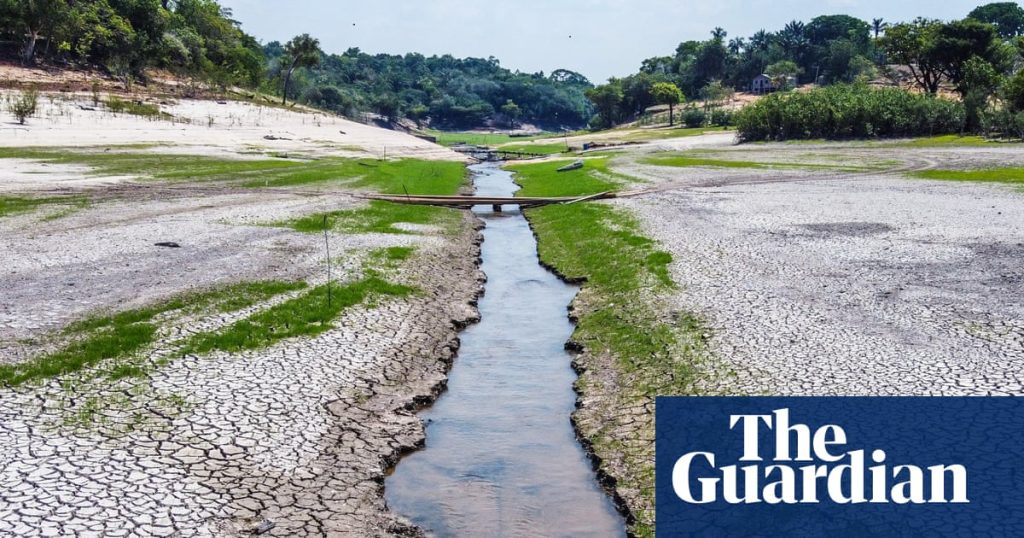There is still a chance for the world to avoid the worst ravages of climate breakdown and return to the goal of 1.5C if governments take concerted action on greenhouse gas emissions, a new assessment argues.
The Climate Analytics report says governments’ goals are inadequate and need to be rapidly revised, and calls for the rapid scaling-up of the use of renewable energy and electrification of key sectors including transport, heating and industry.
World leaders are meeting in Belém, a small city near the mouth of the Amazon in Brazil, on Thursday and Friday to discuss the climate crisis before the Cop30 UN climate summit begins on Monday.
Temperatures have already, for two years, exceeded the limit of 1.5C of global heating above preindustrial levels that was set out in the 2015 Paris agreement.
A UN Environment Programme (Unep) report published this week said current plans published by national governments would lead to heating of about 2.3C to 2.5C, a level that scientists have said would lead to a massive increase in extreme weather and devastating damage to some of the world’s key natural systems.
The Climate Analytics group of researchers say their roadmap could ensure warming peaks at 1.7C before 2050. They say that could be brought down to 1.5C by the end of the century by phasing out fossil fuels and using carbon removal technologies to suck carbon dioxide from the atmosphere.
This will not erase the danger of exceeding 1.5C, however. Scientists are aware of several key tipping points – such as the melting of the Greenland ice sheet, and the potential for the Amazon rainforest to turn from a carbon sink to a source of carbon release into the atmosphere – that could be triggered as Earth warms further.
It is unclear at what temperatures these events could happen and every fraction of a degree of warming is a risk. One key tipping point, the bleaching of corals in warming seas, may already have been reached, according to a recent study.
Bill Hare, the chief executive of Climate Analytics, said: “Overshoot of 1.5C is a woeful political failure and will bring increased damages and risk of tipping points that otherwise could have been avoided. But this roadmap shows that it is still within our power to bring warming back well below 1.5C by 2100.
“We must do all we can to limit any time we spend above this safety threshold to minimise the risk of irreversible climate damages, and the devastation that would be caused by crossing tipping points.”
At Cop30, all countries are expected to produce national climate plans under the 2015 Paris agreement. Called nationally determined contributions (NDCs), these are meant to set out targets on cutting carbon and measures to achieve them. But fewer than half of countries have submitted NDCs before Cop30, and many of those that have been produced are inadequate.
The planet’s most important stories. Get all the week’s environment news – the good, the bad and the essential
Privacy Notice: Newsletters may contain information about charities, online ads, and content funded by outside parties. If you do not have an account, we will create a guest account for you on theguardian.com to send you this newsletter. You can complete full registration at any time. For more information about how we use your data see our Privacy Policy. We use Google reCaptcha to protect our website and the Google Privacy Policy and Terms of Service apply.
after newsletter promotion
Analysis by Unep found that current NDCs would lead to a world about 2.5C hotter than preindustrial levels, and that could rise to as much as 2.8C, a level that would set in motion potentially irreversible changes.
Current NDCs would amount to a cut in carbon of only about 10% by 2035, according to the UN.
According to Climate Analytics, global emissions would need to fall by about a fifth by 2030, compared with 2019 levels, and by 11% a year in the 2030s to limit warming to 1.7C. Methane would need to be cut by 30% by 2035.
Neil Grant, a senior expert at Climate Analytics, said: “The last five years have cost us precious time in the critical decade of climate action. However, they have also seen a revolution in renewables and batteries, which have shattered records across the globe. Riding this tailwinds can help turbocharge our clean energy future and catch up on lost time.”

